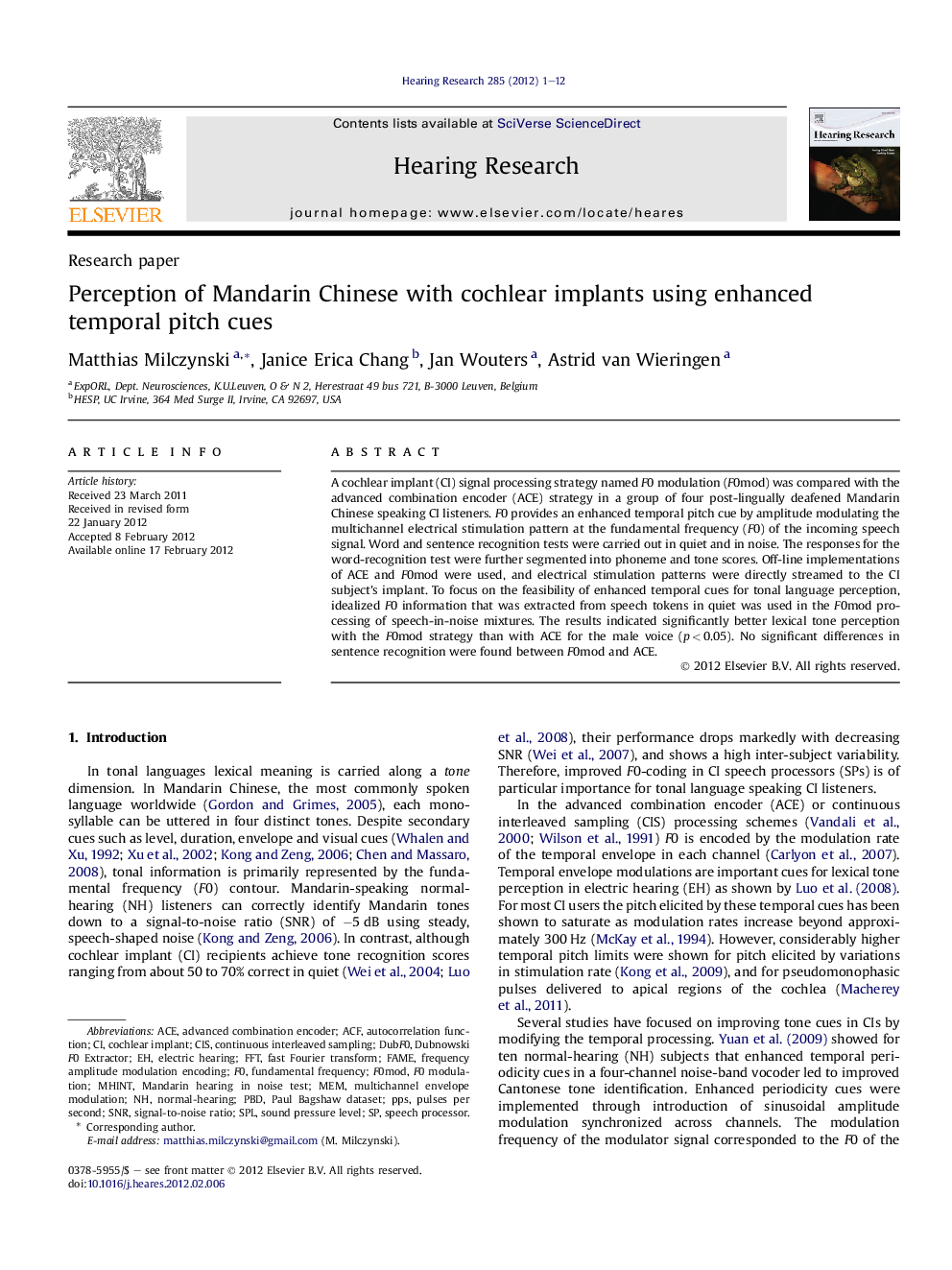| Article ID | Journal | Published Year | Pages | File Type |
|---|---|---|---|---|
| 4355394 | Hearing Research | 2012 | 12 Pages |
A cochlear implant (CI) signal processing strategy named F0 modulation (F0mod) was compared with the advanced combination encoder (ACE) strategy in a group of four post-lingually deafened Mandarin Chinese speaking CI listeners. F0 provides an enhanced temporal pitch cue by amplitude modulating the multichannel electrical stimulation pattern at the fundamental frequency (F0) of the incoming speech signal. Word and sentence recognition tests were carried out in quiet and in noise. The responses for the word-recognition test were further segmented into phoneme and tone scores. Off-line implementations of ACE and F0mod were used, and electrical stimulation patterns were directly streamed to the CI subject's implant. To focus on the feasibility of enhanced temporal cues for tonal language perception, idealized F0 information that was extracted from speech tokens in quiet was used in the F0mod processing of speech-in-noise mixtures. The results indicated significantly better lexical tone perception with the F0mod strategy than with ACE for the male voice (p < 0.05). No significant differences in sentence recognition were found between F0mod and ACE.
► F0mod is a new cochlear implant processing strategy providing enhanced temporal pitch cues. ► We evaluate F0mod for perception of Mandarin Chinese relative to the standard advanced combination encoder. ► A significant improvement in lexical tone recognition with F0mod is demonstrated. ► Sentence recognition is equivalent for both strategies. ► Mandarin-speaking cochlear implantees can benefit from F0mod in lexical tone perception.
